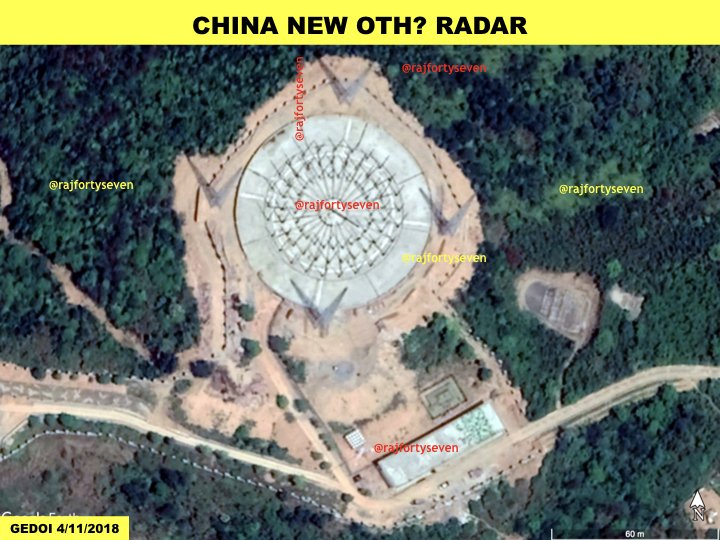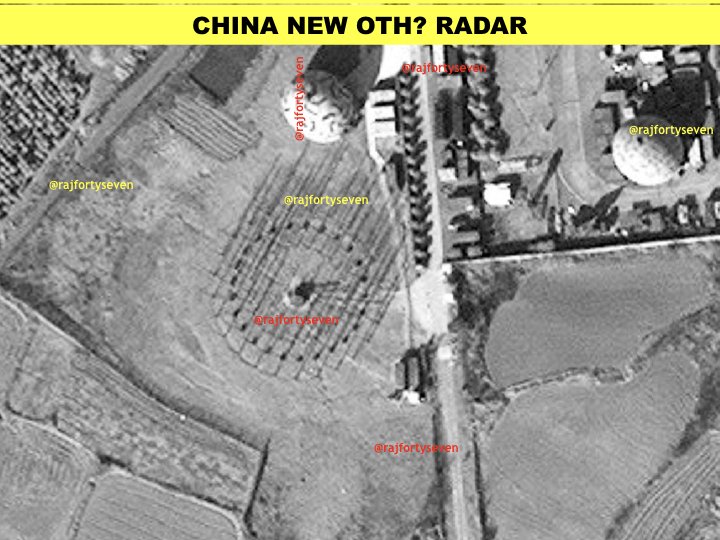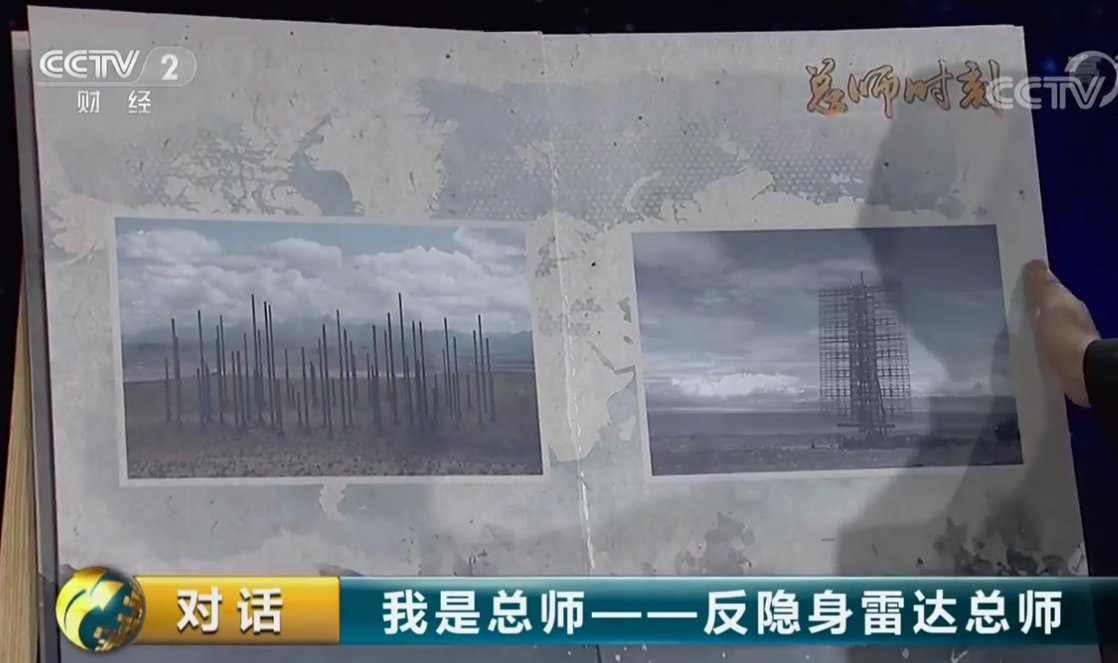you need to read more carefully! Indian permission would be required to use their airspace to attack China from the south, not for China place radar sites in their south.I am surprised that any country would would take it's neighbors opinions into consideration when placing radars within it's own territory. Especially not a country like China.
I call it BS
You are using an out of date browser. It may not display this or other websites correctly.
You should upgrade or use an alternative browser.
You should upgrade or use an alternative browser.
Chinese Radar Developments - KLJ series and others
- Thread starter indochina
- Start date
antiterror13
Brigadier
I am surprised that any country would would take it's neighbors opinions into consideration when placing radars within it's own territory. Especially not a country like China.
I call it BS
I don't think you understood his post properly ....
Hendrik_2000
Lieutenant General
Yes that is correct
New possible OTH? radar noticed on the East coast. Looks like crow's nest. Looking underwater too? Anyone with more inputs?



New possible OTH? radar noticed on the East coast. Looks like crow's nest. Looking underwater too? Anyone with more inputs?



Ideal conditions would mainly involve a head-on approach, which is what would happen when the F-22 is sent to attack these anti-stealth radar platforms, which unfortunately are not mobile. The problem for the Chinese military is that 110km is well inside the range of many munitions that the F-22 could employ to destroy these radars.If we take the highest value 500 km for a 0.04 m^2 target then,
0.04 m^2 >> 500 km
0.0015 m^2 (F-35 extreme) >> 220+ km
0.04 m^2 >> 500 km
0.0001 m^2 (F-22 extreme) >> 110+ km
Values (0.0001 and 0.0015) for the F-22 and F-35 are essetiallly perfect values under the most ideal conditions. From different angles or when the aircraft is maneuvering those values will spike.
Yes that is correct
New possible OTH? radar noticed on the East coast. Looks like crow's nest. Looking underwater too? Anyone with more inputs?
Doesn't look much like the OTH ratdar brochure picture though. Configuration suggests it's omni-directional, which OTH radars typically are not, so perhaps VLF/ELF for communication with submerged submarines? It could also be a LORAN type long range navigation aid, but with the COMPASS satellite navigation system building that seems redundant, so I'm leaning toward submarine comms.
Hendrik_2000
Lieutenant General
Doesn't look much like the OTH ratdar brochure picture though. Configuration suggests it's omni-directional, which OTH radars typically are not, so perhaps VLF/ELF for communication with submerged submarines? It could also be a LORAN type long range navigation aid, but with the COMPASS satellite navigation system building that seems redundant, so I'm leaning toward submarine comms.
Thanks that is probably what it is VLF/ELF for submarine communication look like the elephant cage or Wullenweber radar that they installed in SCS
Hyperwarp
Captain
Ideal conditions would mainly involve a head-on approach, which is what would happen when the F-22 is sent to attack these anti-stealth radar platforms, which unfortunately are not mobile. The problem for the Chinese military is that 110km is well inside the range of many munitions that the F-22 could employ to destroy these radars.
YLC-8B is not fixed like OTH radars - . It is towed, and you can deploy multiple these in reasonably close proximity unlike OTH radars that take enormous space. Ranges of OTH radars are much, much greater. During the 1999 boming of Serbia, the the French Nostradamus OTH Radar supposed to have repeatedly detected the B-2 (flying in full stealth mode) at ranges that had supposedly pissed off the Americans in a big way. Same with the Jindalee OTH Radar. Let's just say it is far, far greater than 100 km when in comes to OTH radar for B-2 and F-22.
Regarding the 0.0001 m^2 values; this is probably a ground test value at an RCS test range. You just have to look at how small 0.0001 m^2 is. That is insanely small for the bird the size of the F-22. But in actual flight, even a slight deviation due to what ever reason, even a small control surface movement, will bump the RCS. Plus, what Air-to-Ground munitions does the F-22 have at 110 km to take out the YLC-8B? F-22 does not carry anti-radiantion missiles. JDAM-ER has a range of 80 km IIRC, and I don't think the F-22 can carry them. F-35 on the other hand should be able to.
I looked back and realized you were talking about the YLC-8B. I was talking about the large OTH radar complexes that have anti-stealth functions from Hendrick's post on this page, not the YLC-8B.YLC-8B is not fixed like OTH radars - . It is towed, and you can deploy multiple these in reasonably close proximity unlike OTH radars that take enormous space. Ranges of OTH radars are much, much greater. During the 1999 boming of Serbia, the the French Nostradamus OTH Radar supposed to have repeatedly detected the B-2 (flying in full stealth mode) at ranges that had supposedly pissed off the Americans in a big way. Same with the Jindalee OTH Radar. Let's just say it is far, far greater than 100 km when in comes to OTH radar for B-2 and F-22.
But by how much? Even if by an order of magnitude that would still give you a 0.001 m^2 sized target to deal with. The frontal RCS of the F-35 under ideal conditions is allegedly 0.00016 m^2 or something like that, so the same would apply to that fighter. Yes, 0.0001m^2 is insanely small, the cross section of a metal marble. But that doesn't necessarily mean the US military didn't achieve that either in the lab or in the field.Regarding the 0.0001 m^2 values; this is probably a ground test value at an RCS test range. You just have to look at how small 0.0001 m^2 is. That is insanely small for the bird the size of the F-22. But in actual flight, even a slight deviation due to what ever reason, even a small control surface movement, will bump the RCS.
Right, I realized that I was thinking of the F-35 while talking about the F-22. The F-35 does have some internal munitions that can attack radar installations, including JSOW and JDAM-ER, and external munitions that can do so at very long range like the JASSM and JASSM-ER if it wants to accept an RCS penalty, which could conceivably still leave it outside a radar's detection range at a maximum launch range of either 370km or 925+km for the ER version.Plus, what Air-to-Ground munitions does the F-22 have at 110 km to take out the YLC-8B? F-22 does not carry anti-radiantion missiles. JDAM-ER has a range of 80 km IIRC, and I don't think the F-22 can carry them. F-35 on the other hand should be able to.
If we take the highest value 500 km for a 0.04 m^2 target then,
0.04 m^2 >> 500 km
0.0015 m^2 (F-35 extreme) >> 220+ km
0.04 m^2 >> 500 km
0.0001 m^2 (F-22 extreme) >> 110+ km
Values (0.0001 and 0.0015) for the F-22 and F-35 are essetiallly perfect values under the most ideal conditions. From different angles or when the aircraft is maneuvering those values will spike.
RCS has to be taken in context of radar frequency. For example, something that is 0.1m2 at X band isn't going to be that figure at S band.
